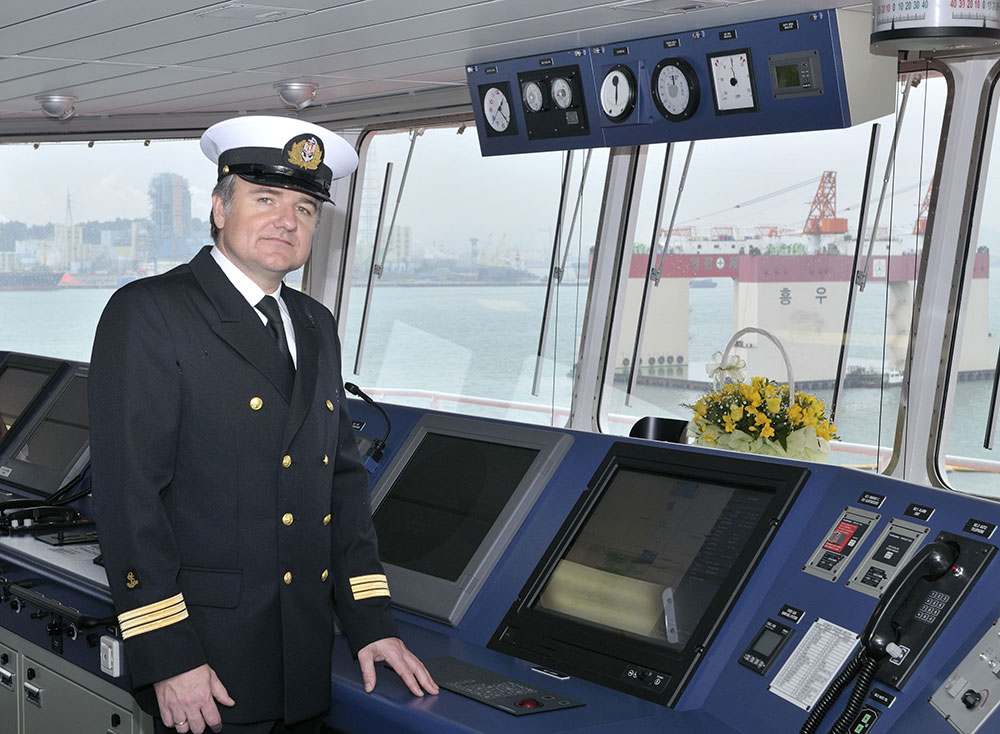A television station in the Bay Area found itself in a rather awkward spot a while back, broadcasting names for airline pilots that, well, were completely made up and carried some rather insensitive meanings. This event, which happened during a live news show on a Friday, brought a lot of attention to KTVU Channel 2. It involved a serious flight incident, but the news report itself became a big deal for entirely different reasons, drawing widespread talk and a lot of strong reactions from people watching and reading online.
The names shared on air, like "Sum Ting Wong," "Wi Tu Lo," "Ho Lee Fuk," and "Bang Ding Ow," were not just incorrect; they seemed to be a kind of joke that had been circulating on the internet, playing on sounds that mimicked real words in a pretty bad way. This situation quickly became a big deal, spreading across the internet like wildfire. It caused many people to express their displeasure, pointing out how inappropriate and racially charged these names truly were, especially when linked to a serious airline accident.
The whole thing, as a matter of fact, ended up being a huge lesson for news outlets everywhere about checking facts and being careful with what gets put out to the public. It showed how quickly a mistake can spread and how much impact it can have, particularly when it touches on sensitive topics and involves a major news organization. This moment in news history, you know, is still talked about today as a prime example of a broadcast gone very, very wrong.
Table of Contents
- The Story of "Captain Sum Ting Wong"
- How Did "Captain Sum Ting Wong" Make News?
- The Broadcast of Captain Sum Ting Wong's Name
- The Fallout from the Captain Sum Ting Wong Incident
- Who Was Behind the "Captain Sum Ting Wong" Prank?
- The Aftermath for Captain Sum Ting Wong and KTVU
- What Lessons Can We Learn from "Captain Sum Ting Wong"?
- How Did "Captain Sum Ting Wong" Go Viral?
- A Look Back at the Captain Sum Ting Wong Story
The Story of "Captain Sum Ting Wong"
While "Captain Sum Ting Wong" is not, you know, a real person, this name became quite well-known because of a very public mistake made by a news station. It represents a moment when a joke from the internet found its way onto a live broadcast, causing a good bit of trouble. The name itself, and others like it, poked fun at a serious event, which many people found deeply upsetting. This "captain" is really a symbol of a news error that went viral, showing how quickly misinformation can spread, especially when it is also offensive. The story of "Captain Sum Ting Wong" is more about the journey of a fake name through the news cycle than about an actual individual.
This character, if you can call it that, came to life on a news screen during a report about a plane crash. It was part of a list of supposed pilot names that were, in fact, just plays on words meant to sound like something was wrong, or that things were too low, or other crude ideas. The station later said they were very sorry for this mistake. So, "Captain Sum Ting Wong" stands as a reminder of the need for careful fact-checking in reporting, and the strong reactions that can happen when news organizations get things wrong, especially with something so sensitive. It's a rather unique "biography" for a name that never belonged to a real person, yet gained a lot of fame in its own way.
Here are some "personal details" for the character known as "Captain Sum Ting Wong," as it appeared in the news:
- Actor Eddie Marsan
- What Is Yahoo Email
- Best Internal Temperature For Medium Rare Steak
- Lindsay Crouse Actor
- Temp Medium Rare
| "Role" in the News Story | Fictional pilot name broadcast during a live news report about a plane crash. |
| "Origin" | A racially insensitive joke or prank that circulated online. |
| "Associated Names" | "Wi Tu Lo," "Ho Lee Fuk," "Bang Ding Ow." |
| "Initial Appearance" | KTVU Channel 2 newscast on a Friday at noon. |
| "Public Reaction" | Widespread criticism, went viral across media blogs and social platforms. |
| "Consequences" | Led to an apology from KTVU, a lawsuit from Asiana Airlines, and an NTSB intern being released. |
| "Legacy" | Became a famous example of a major news blunder and the importance of fact-checking. |
How Did "Captain Sum Ting Wong" Make News?
The way "Captain Sum Ting Wong" entered the public eye is quite a tale, honestly. It all began during a live news show on a Friday. KTVU Channel 2, a Bay Area news station, was giving updates on a very serious airline accident, Asiana Flight 214. They were sharing what they believed to be the names of the flight crew. However, the names they put out there were anything but real. They were, in fact, a series of made-up names, including "Sum Ting Wong," "Wi Tu Lo," "Ho Lee Fuk," and "Bang Ding Ow." This happened on air, for everyone to see and hear, which is that part that made it so shocking.
The reporter, reading from a teleprompter, spoke these names as if they were genuine. This was a pretty big moment of disbelief for many viewers. The names themselves, you know, are designed to sound like phrases that suggest something is amiss, or that things are not right, which made them even more inappropriate given the serious nature of the plane crash. The fact that a news outlet would broadcast such names, especially during a report about a tragedy, raised a lot of questions about how their information was checked and approved before going live. It was a situation that, frankly, left many people scratching their heads and quite upset.
The Broadcast of Captain Sum Ting Wong's Name
The specific moment when "Captain Sum Ting Wong" was broadcast happened during a newscast. A news anchor read these names out loud, and they were also shown on the screen. This was supposed to be new information about the plane crash, giving details about the people involved in flying the aircraft. The names, which included "captain sum ting wong," were presented as confirmed facts. This made the mistake even more noticeable and, in some respects, quite unbelievable for those watching. The video of this broadcast quickly spread online, making it a topic of conversation across the country and beyond.
The station later explained that they believed the names had been confirmed by the National Transportation Safety Board, or NTSB, which is a body that looks into accidents like this. However, it turned out that an intern at the NTSB had, you know, mistakenly confirmed the fake names to the news station. This chain of events led to a situation where a very obvious prank made its way onto a major news broadcast, causing a huge stir. The broadcast of "captain sum ting wong" became a prime example of how a simple error in checking facts can have really big consequences for a news organization's standing and trustworthiness.
The Fallout from the Captain Sum Ting Wong Incident
The immediate fallout from the "Captain Sum Ting Wong" broadcast was pretty significant, to say the least. The video of the news segment went viral almost right away. People shared it widely on social media platforms and media blogs. The reaction was mostly one of shock and anger. Many viewers and commentators called out the station for broadcasting names that were clearly offensive and racially charged, especially in the context of a tragic event. The criticism was heavy, with people questioning the news station's judgment and its process for verifying information. It really put KTVU in a tough spot, you know, having to deal with such a public and widely seen mistake.
KTVU quickly realized the seriousness of their error. They issued an apology, saying they were very sorry for what had happened. This apology was meant to address the widespread anger and disappointment. However, the damage was already done in many ways. The incident became a symbol of media inaccuracy and a lack of sensitivity. It also led to a lawsuit from Asiana Airlines, the company whose flight was involved in the crash. They felt that the news station's actions had harmed their reputation, which is understandable given the nature of the broadcast. The whole thing turned into a really big deal for the news station and everyone involved, frankly.
Who Was Behind the "Captain Sum Ting Wong" Prank?
Many people wondered how such a thing could have happened, and who was actually behind the "Captain Sum Ting Wong" prank that fooled a news station. It turns out that the fake names came from an anonymous source, someone who had previously been a commercial pilot and was seen as a trusted contact by reporters at KTVU. This individual passed along the incorrect names to the station. This shows how important it is for news outlets to not just trust sources, but to also independently check any information, especially when it seems a bit unusual or too good to be true. The source, it appears, essentially duped the news station with these made-up pilot names.
Adding another layer to this story, the NTSB, which was investigating the actual plane crash, later released an intern from their duties. This intern was apparently the one who had confirmed the incorrect names to KTVU, believing them to be real. So, you have a situation where a prankster gave fake names to a trusted source, who then gave them to a news station, and an intern at a government agency accidentally confirmed them. It's a rather complex chain of events that led to the broadcast of "captain sum ting wong" and the other fake names. This really highlights how a single piece of bad information can travel through different channels and cause a lot of trouble.
The Aftermath for Captain Sum Ting Wong and KTVU
The aftermath of the "Captain Sum Ting Wong" incident was a tough time for KTVU. The station faced a lot of public anger and criticism, which really put their reputation on the line. They had to issue a very public apology, saying they sincerely regretted the error. This apology was broadcast on their own channel and shared widely. The incident became a major topic of discussion about media ethics and the importance of getting facts right. It was a moment that, you know, they probably wished they could take back, but once something is on live television, it's out there for good.
Beyond the public outcry, Asiana Airlines decided to take legal action against KTVU. They filed a lawsuit, arguing that the broadcast of these racially charged, fake names had caused damage to their image. This added another layer of difficulty for the news station, turning a broadcast mistake into a legal issue. The NTSB also took action, releasing the intern who had mistakenly confirmed the names. So, the impact of "captain sum ting wong" and the other fake names reached pretty far, affecting individuals and organizations alike. It was a clear example of how a moment of carelessness can have really wide-ranging and long-lasting effects, particularly in the news business.
What Lessons Can We Learn from "Captain Sum Ting Wong"?
The whole "Captain Sum Ting Wong" situation offers some really important lessons for everyone, especially those who work in news. One of the biggest takeaways is the absolute need for careful fact-checking. News organizations get information from many places, but this event showed that even when a source seems reliable, or when an official-sounding body like the NTSB is involved, every piece of information needs to be double-checked, and then checked again. It’s a reminder that trusting blindly can lead to very big, very public mistakes, which, you know, can really hurt a news outlet's standing with its audience.
Another lesson is about sensitivity. The names used were not just fake; they were also deeply offensive. This incident highlights the importance of being aware of cultural sensitivities and avoiding anything that could be seen as racist or mocking, especially when reporting on serious events. News has a responsibility to inform, but also to do so in a way that respects all people. The intense public reaction to "captain sum ting wong" showed just how much people care about fair and respectful reporting. It's a powerful reminder for anyone putting out information to think about how it might be received by different groups of people.
How Did "Captain Sum Ting Wong" Go Viral?
The story of "Captain Sum Ting Wong" spreading like wildfire is a classic example of how things go viral in our connected world. The moment the names were read on air, viewers were quick to notice something was very wrong. Many people recorded the broadcast or quickly found clips of it online. These videos were then posted on media blogs, shared across social media sites, and sent around through messages. The sheer absurdity of a news station broadcasting such clearly fake and offensive names made it instantly shareable. It was, frankly, just so unbelievable that people felt compelled to show it to others, saying, "You won't believe what happened!"
The fact that it involved a serious plane crash, combined with the incredibly inappropriate nature of the names, created a perfect storm for viral spread. It tapped into a mix of shock, outrage, and a bit of dark humor for some, though mostly outrage. The video of the afternoon anchorwoman saying the names became a piece of internet history, capturing the error for everyone to see, you know, again and again. This quick and wide sharing meant that within hours, people across the country knew about "captain sum ting wong," making it a widely discussed topic and a cautionary tale for newsrooms everywhere about the speed and reach of information in the digital age.
A Look Back at the Captain Sum Ting Wong Story
Looking back at the "Captain Sum Ting Wong" story, it remains a powerful example of a news blunder that captured the attention of many. It began with a simple yet critical failure in verifying information, leading to a live broadcast of racially insensitive, fake names related to a tragic plane crash. This mistake, aired by KTVU Channel 2, quickly turned into a massive public relations problem for the station. The names, like "Sum Ting Wong," were clearly designed to be a joke, which made their appearance on a serious news segment all the more shocking and unacceptable to viewers and media critics alike. It was a moment that truly showed the immediate and far-reaching consequences of inaccurate reporting.
The incident sparked widespread outrage, prompting KTVU to issue a public apology and face a lawsuit from Asiana Airlines. It also led to consequences for individuals involved, including an NTSB intern. The whole situation served as a stark reminder for news organizations about the absolute need for rigorous fact-checking, the importance of cultural sensitivity, and the speed at which information—and misinformation—can spread in today's interconnected world. The "captain sum ting wong" episode, you know, continues to be a frequently cited case study in journalism schools, illustrating the critical responsibilities that come with sharing news and the profound impact a single error can have on public trust and reputation.
Related Resources:



Detail Author:
- Name : Fletcher Bednar
- Username : rbecker
- Email : hartmann.kim@koch.org
- Birthdate : 2003-04-17
- Address : 1764 Ferry Ports East Cade, IN 57381-6590
- Phone : (870) 620-4366
- Company : Kuhic PLC
- Job : Insurance Underwriter
- Bio : Vitae quo ab harum eos optio quo. Odio esse deserunt aliquam soluta voluptatem.
Socials
instagram:
- url : https://instagram.com/stuart84
- username : stuart84
- bio : Ut sit voluptatem ducimus incidunt doloremque. Beatae dignissimos quo illum qui voluptatem.
- followers : 6681
- following : 1820
twitter:
- url : https://twitter.com/schmeler2022
- username : schmeler2022
- bio : Sint nihil culpa sapiente ullam et optio voluptatum doloremque. Labore voluptatibus ab magnam corrupti voluptatem qui molestiae. Rerum in iste et quae ut.
- followers : 2890
- following : 1898